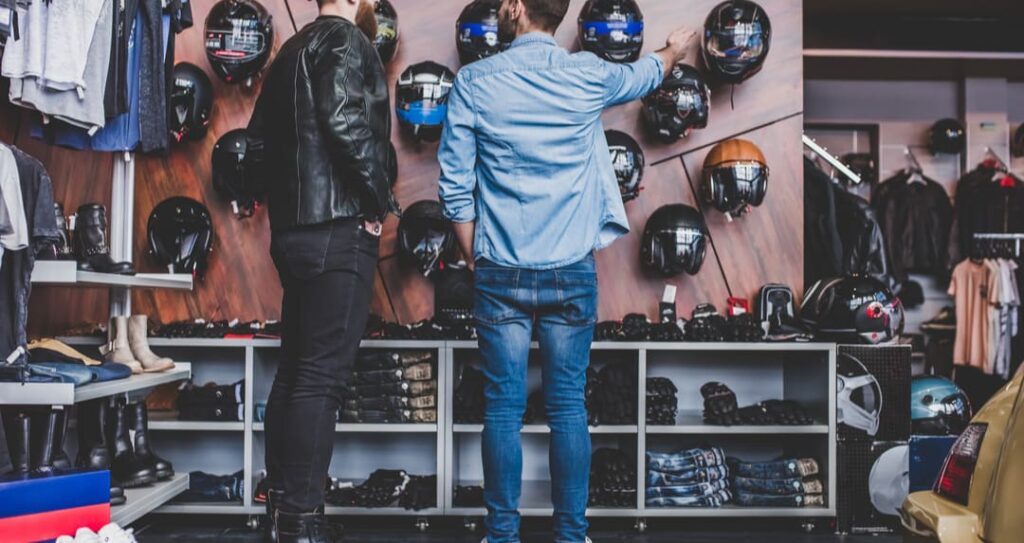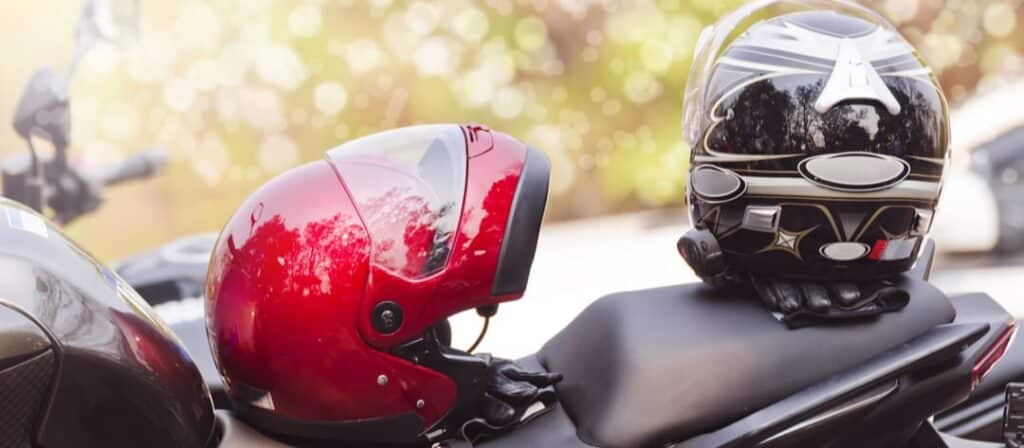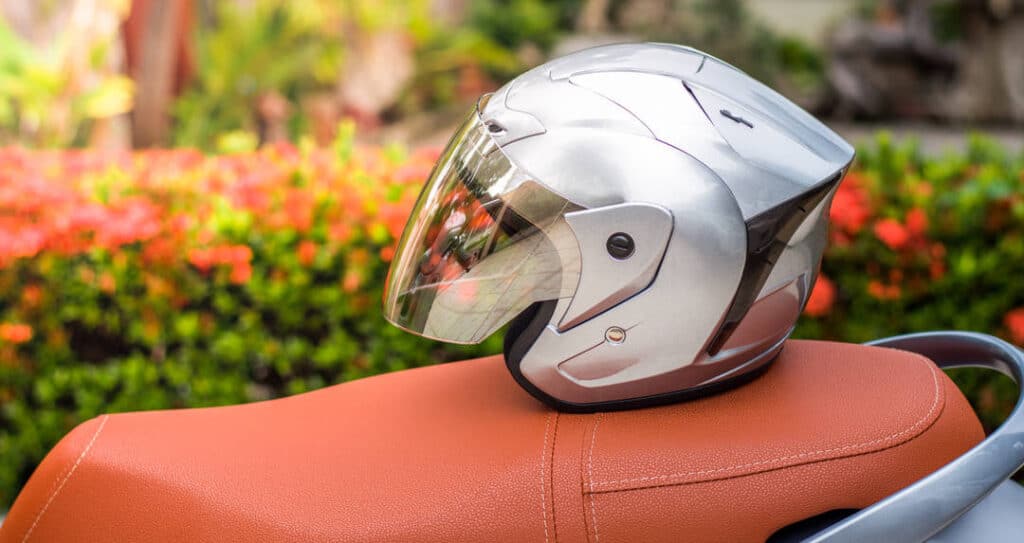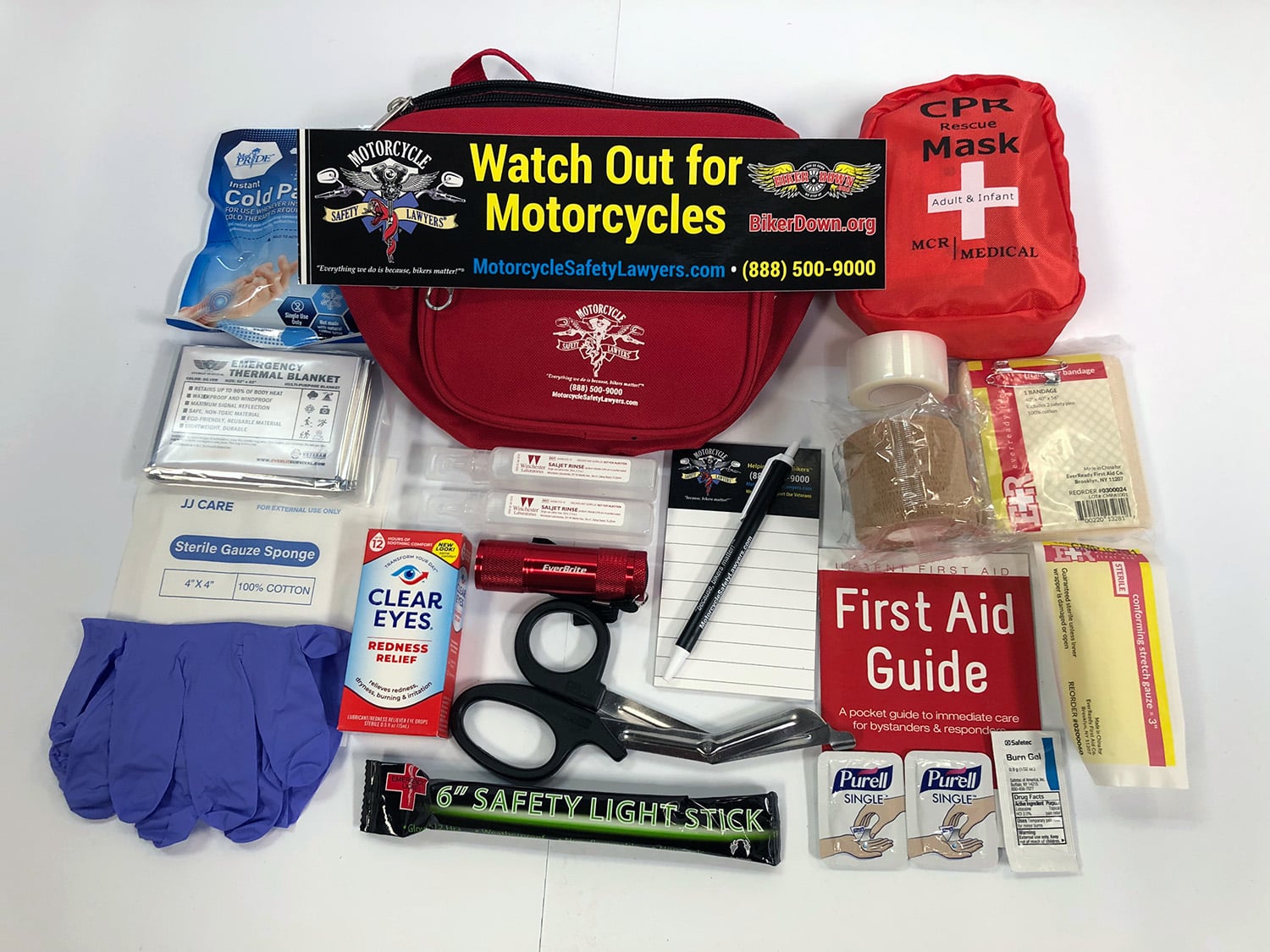Buying A Motorcycle Helmet | Important Factors To Look For
Last updated Wednesday, February 22nd, 2023

Buying a motorcycle helmet is something that you should do before you even think about getting on a motorcycle. Motorcycles offer riders an amazing sense of freedom, but that freedom comes with a cost. That cost is the fact that motorcycle riders are much more exposed when they’re on the road than other drivers are. And, if they are in an accident the potential for serious or even life-threatening injuries is higher than it is for other drivers.
While practicing defensive riding, being aware of your surroundings, and obeying all traffic laws will make you less likely to get into an accident, nothing you do can completely eliminate the risk of an accident. What you can do however is prepare yourself in case you are in an accident.
That means wearing protective gear whenever you ride and no piece of protective gear is more important than a helmet. But, what should you look for when you’re buying a motorcycle helmet?
Buying A Motorcycle Helmet | What Will You Be Using Helmet For?
Do you have a racing motorcycle and plan to take it to the track? Or do you have a more pedestrian model that you plan to use for your commute? What about a bike for going on long cruises? No helmet is going to fit everyone’s needs. You need to find one that will provide adequate protection while also keeping you comfortable.
Buying A Motorcycle Helmet | What Is Your Budget Like?
As a general rule of thumb, more expensive helmets are going to provide a greater level of protection. In other words, you get what you pay for. A motorcycle helmet is there to protect the most important part of your body, your head. So, you don’t want to be cheap here.
Now, if you don’t have the money to buy an expensive helmet, buy a less expensive one until you can afford to spend more money on a better helmet. Remember, having a lesser quality helmet is still better than having no helmet at all.
The Construction Of Your Helmet Is Important?
What types of material should your helmet be made of? The type of material a helmet is made of will have a huge impact on how it performs. Here are the most common types of materials used and how they can help to protect your head in the event of a fall or accident.
- Poly-carbonate – Poly-carbonate flexes with an impact which helps it to absorb the force. This will help to protect your head by absorbing some of the energy in an accident. Poly-carbonate is not the best option but it is an economical one. The bottom line, this is a helmet that provides decent protection at a low price.
- Fiberglass composite – Fiberglass composite also absorbs energy in an impact, but it’s much more effective than carbonate. Fiberglass composite will actually crack when struck with sufficient force. These cracks will ruin your helmet but they’ll also disperse a lot of energy which can help to reduce your risk of a serious injury. The bottom line, this is a moderately expensive helmet that provides good protection.
- Carbon fiber – Carbon fiber is the most expensive type of motorcycle helmet and also the best option for you. This material absorbs energy and redistributes it throughout the helmet which helps to protect you in an accident. Carbon fiber is much more effective than other materials and if you can afford it, it’s the best option. The bottom line, this is the most expensive helmet and it’s also the best.
Buying A Motorcycle Helmet | Looking At The Ratings
When you’re picking out your new motorcycle helmet, looks are important. After all, you don’t want to be riding down the street looking foolish. But, what’s far more important is the safety rating of your helmet. All helmets have a safety rating, so make sure that the motorcycle helmet you’re considering has a good rating before buying it.
Buying A Motorcycle Helmet | Choose A Helmet That Fits
If you want to ruin the fun you have when riding a motorcycle, buy an uncomfortable helmet that doesn’t fit properly. Wait, that’s probably the last thing you want to do! You need a helmet to fit properly for comfort as well as safety.
Modern motorcycle helmets have a lot of amazing safety features but those features only work to their full potential when you wear a helmet that fits you. So, how do you choose the right size helmet?
Use a soft measuring tape and wrap it around your head just above your eyebrows and around the widest part of your head. Getting an accurate measurement doing this yourself is difficult, so have someone help you if at all possible.
If you can’t find anyone to help you, use a mirror to help guide you. Once you have an accurate measurement, you can use it to compare to the measurements of the helmet you’re looking at, then make sure that it’s a proper fit.
Don’t forget to take into account the shape of your head. No two people are alike and no two head shapes are exactly alike. But for the most part, heads fall into one of four categories. They are either round, short oval, medium oval, or long oval in shape. Even if you have a good measurement of your head, if you choose the wrong shape, your helmet won’t fit properly.
Important Laws Regarding Certified Motorcycle Helmets

The US Federal Government states that wearing a helmet decreases the risk of a rider dying in a motorcycle crash by 37%. Statistics by the National Highway Safety Administration (NHTSA) further point out that in the event of a motorcycle accident, riders who don’t wear helmets are 3 times more likely to develop severe brain injuries compared to those who wear certified motorcycle helmets.
These statistics imply that wearing a helmet is of primary importance for all motorcyclists. As a matter of fact, helmets are the most vital piece of safety gear that all motorcyclists should have when operating their bikes.
It’s because of this fact that different states have enacted laws regarding certified motorcycle helmets. These laws define how riders should conduct themselves when riding their motorcycles when on the road.
Certified motorcycle helmets are highly recommended for use in the US. In addition to this, the US Department of Transport (DOT) has the mandate to certify all helmets sold in the country.
Most of these helmets are for on-road use. However, off-road motorcyclists can also use DOT-certified helmets because they’re considered to have a higher safety standard compared to other helmets.
The following are important laws regarding certified motorcycle helmets that you need to be aware of.
Buying A Motorcycle Helmet | Meeting The Set Federal Safety Standard
All helmets sold in the US should meet the set Federal safety standard. The safety of riders is vitally important. That’s why the federal government, in conjunction with the Department of Transport, has the mandate of defining the helmets that riders should wear for on-road use.
This means that not all helmets are safe for use when riding your motorcycle. In this respect, only certified motorcycle helmets should be sold to motorcyclists in the US. Furthermore, the DOT makes it mandatory for all motorcycle helmets sold in the country to be in line with the Federal Motor Vehicle Safety Standard (FMVSS) 218.
It’s this standard that directs the standards of performance that helmets must meet. This is in order to offer much-needed protection in the unfortunate event of a motorcycle accident. The DOT conducts annual compliance testing to establish whether the helmets that riders are using in the US are in line with the Federal safety standard.
As a result of the imperative nature of motorcycle helmets, different states have put in place laws that make it compulsory for helmets to meet FMVSS 218 standards. Therefore, if a rider wears an unsafe helmet, he or she will be violating state laws. These laws insist on using safe helmets that meet Federal safety standards.
This means that all riders should always ensure that they use certified motorcycle helmets.
Buying A Motorcycle Helmet | How To Tell If It Is Certified
There are various indications that will help you determine which motorcycle helmets are safe and which ones are not. As a motorcyclist, you should know the difference. With this information, you’ll protect yourself from legal and safety-related problems in the future.
One of the major aspects to look out for is the thickness of the inner liner. In certified helmets that meet federal standards, the inner lining is thicker than that of other helmets.
Typically, they have a one-inch polyester foam that makes it thick enough for a rider’s safety. Another major characteristic of DOT standard helmets is that they have sturdy chin straps and solid rivets.
These are of major importance when it comes to maintaining safety. Moreover, the weight of a certified helmet should be about three pounds. Unsafe motorcycle helmets, on the other hand, can weigh one pound or even less.
Therefore, in the event of a crash, riders wearing an unsafe helmet are likely to sustain severe head injuries that can prove to be life-threatening. The design and style of the helmet are also important.
A DOT standard helmet does not have extensions of more than two-tenths of an inch from the exterior of the helmet. If you find a helmet that extends further than the above-mentioned measurement, it’s probably an unsafe helmet.
State Laws Regarding Certified Motorcycle Helmets
There are states in the US that require all riders to wear helmets. However, other states have specific ages for riders who should wear helmets. More confusing still is that there are also states that do not have laws regarding helmets at all.
Some of the states that require all riders to wear motorcycle helmets include Alabama, California, Maryland, Nebraska, and Georgia. Furthermore, some of the states that require riders of particular ages to wear helmets include Alaska (18 years), Arizona (18 years), Colorado (under 18), Connecticut (under 21), and Delaware (Under 19).
The states that don’t currently have laws regarding certified motorcycle helmets include Illinois, Iowa, and New Hampshire. The laws regarding certified motorcycle helmets in different states in the US show that the implementation of helmet use varies greatly.
Depending on where a rider comes from, he or she is or is not, required to wear a helmet when operating a motorcycle. However, irrespective of whether your state makes helmet-wearing compulsory, wearing a helmet is still vitally important.
Why Smart Helmet Technology Is Ideal For Motorcycle Safety

With technology advancing, the limitations of an ordinary helmet are becoming more noticeable and thus, smart helmets are created to address this. Different helmets have different features that help you enjoy your riding experience and also drastically decrease the chances of accidents. Listed below are some of the features that make the smart helmet technology ideal for motorcycle safety.
Rear Lights
With built-in rear lights that respond to your handlebars, you’ll be more visible on the roads. This is especially important for motorcyclists who usually go out at night. While your motorcycle is already equipped with rear lights, having an additional rear light at the eye level of most drivers will drastically decrease the chances of a driver missing you on the road.
Built-in rear lights on helmets are also necessary for those who drive in places with low visibility such as foggy areas.
Camera
Motorcyclists used to install dash cameras on their helmets to document their trips. While this is highly advisable, installing an external dash camera will affect the aerodynamics of your helmet.
With a smart helmet, the cameras are built-in and will not be a problem with the airflow. Aside from dash cameras that typically have wide angles, there are also 4k front or rearview cameras available in some helmets. In the case of an accident, your lawyer will have all the information needed to assist you.
GPS
Equipped with high-precision GPS, it helps you pinpoint your location. This feature is extremely helpful when driving through unfamiliar places as it makes navigation easier. Therefore, you can explore new cities without the anxiety of getting lost.
Plus, in the case of an accident, it will also be easier to ask for rescue without wasting time trying to locate you. You can also track your route using GPS. This can offer insightful information that can improve your driving journey.
Speakers
Connected via Bluetooth, you can listen with clarity to applications such as Waze while driving. While it has built-in speakers, it does not limit your hearing and you can still hear the outside environment with ease. Because of this, you can also enjoy listening to your favorite music or FM radio while driving.
Microphone
With noise control and well-placed microphones, speaking while driving will be made easier for people using smart helmets. Most are equipped with windbreak technology that prevents loud wind noises or traffic noises that decrease the quality of the sound.
For groups of motorcyclists riding together, this is essential to communicate with your fellow riders about the risks and expected problems ahead.
Blind Angle Sensors
Being extremely vigilant on the road is necessary. While driving, motorcyclists are vulnerable to vehicles that are in their blind spots. Using ultrasonic sensors, the helmet will detect if an object is approaching in the range of your blind spot and will warn you promptly.
The LED under the visor will blink when activated. Additionally, there are more advanced helmets that allow customization of the intensity of the LED.
Built-In Screen In Advanced Smart Helmet Technology
There are smart helmets that have built-in screens that have all the information you need. Some helmets have built-in screens in the visors that indicates when a gas station is nearby. It can be connected to your smartphone to call notifications, weather notifications, and other important details.
Choose Wisely When Buying A Motorcycle Helmet: Your Life Could Depend On It
Being able to prevent all motorcycle accidents would be great but that’s not going to happen. Nobody can prevent every accident, so you have to prepare yourself in case you are in one. You have to assume that every time you get on your bike could be the day you’re in an accident.
That means that proper protective equipment is vitally important. If you ride without a helmet, you’re putting yourself at enormous risk. If you ride with a substandard helmet you’re doing the same. So, do yourself a favor, get educated about helmets, and then get one that provides the best protection possible.



